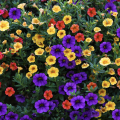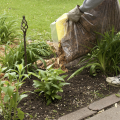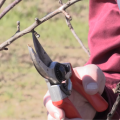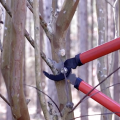News By Department: Plant and Soil Sciences
Whew. It’s hot outside! Just a trip to the mailbox makes me break into a sweat. As you’re outside working in your lawn and garden, remember to stay hydrated and come inside if you start feeling overheated Here are four tasks to complete in your yard for the month of August:
Mississippians are urged not to open or plant packets of unknown seeds that are appearing unsolicited in mailboxes, seemingly shipped from China. Mississippi Commissioner of Agriculture and Commerce Andy Gipson urged state residents who receive the seeds to report them immediately. The Bureau of Plant Industry’s phone number is 662-325-3390.
And just like that, we’re over halfway through the year. How is that possible? I have spent more time at my home over the past few months than I have in a long time!
With many summer attractions closed or limited due to COVID-19, people are heading into the great outdoors. As you’re exploring nature, you don’t want to have a run-in with the dreaded poison ivy.
When Jim DelPrince became a horticulture specialist with the Mississippi State University Extension Service, his goal was to get flowers in the hands of Mississippians.
It’s starting to get hot out there, y’all! Don’t let the Mississippi heat deter you from taking good care of your garden and landscape.
The COVID-19 pandemic presented a new obstacle for Mississippi blueberry growers in 2020, impacting the labor force for the early-season varieties.
With so many Mississippians staying at home more than usual, it’s the perfect time to start planning your summer landscape.
Floral enthusiasts and professional floral designers can broaden their design skills in a three-phase horticulture course that has online, in-person, and volunteer components.
Everyone’s normal routine is being flipped upside down. Employees are working from home, kids are out of school, and social gatherings are postponed. Boredom and stress are setting in. Gardening to the rescue!
If you’ve got crape myrtles, you should be on the lookout for Crape Myrtle Bark Scale. This invasive pest can turn easy-to-care for shrubs and trees into high-maintenance plants covered in a black, sooty mold.
While the insects won’t kill the tree outright, the tree will eventually produce fewer and smaller blooms if the insects are allowed to reproduce year after year.
The first two months of 2020 have been exceptionally wet and dreary. But don’t lose hope, spring is right around the corner! The daffodils are blooming, and warmer days are in sight.
Although we still have some cold weather in store, now is the time to start thinking about pruning. Late winter and early spring are the times to prune fruit trees, including apple and pear trees.
The invasive species of fruit fly, Spotted Wing Drosophila, can wreak havoc on the state’s largest commercial fruit crop – blueberries. But homeowners likely won’t find it to be a significant problem.
If you’ve got landscape chores on your mind, pruning is no doubt on your list. Crape myrtles are a staple in landscapes across the state because of their low-maintenance beauty.
It may be chilly outside, but don’t let that deter you from going outside and working in your garden and landscape. Grab a jacket and your gardening tools, there is plenty to be done during February!
If you are planning your spring garden chores, mulching is likely on your list. But you may not know that there is a right and wrong way to apply mulch.
If you need something green to brighten up your space or get you through the winter months, there is a plant out there for you. But efore you shop for plants, understand the environment of your home or office because different plants have different needs. You must consider six factors when choosing indoor plants if you want to be successful: light, temperature, water, humidity, soil, and fertilization.
Blueberry growers and others interested in growing blueberries commercially can learn more about the crop during an upcoming workshop.
Do you have improving your garden or landscape on your New Year’s resolution list? If you don’t, you should! Each month, we are going to offer a few suggested tasks to do. So, without further ado, here are four tasks for you to complete in your garden and landscape during the month of January:


















